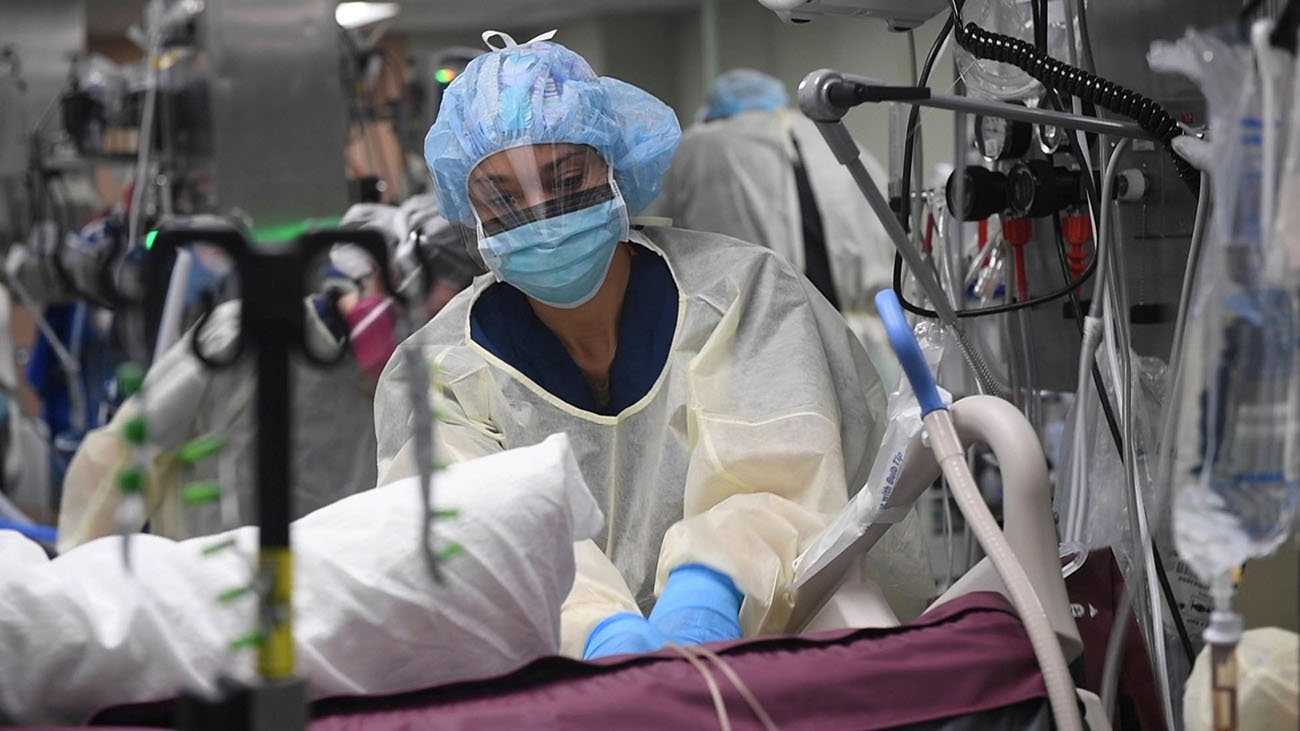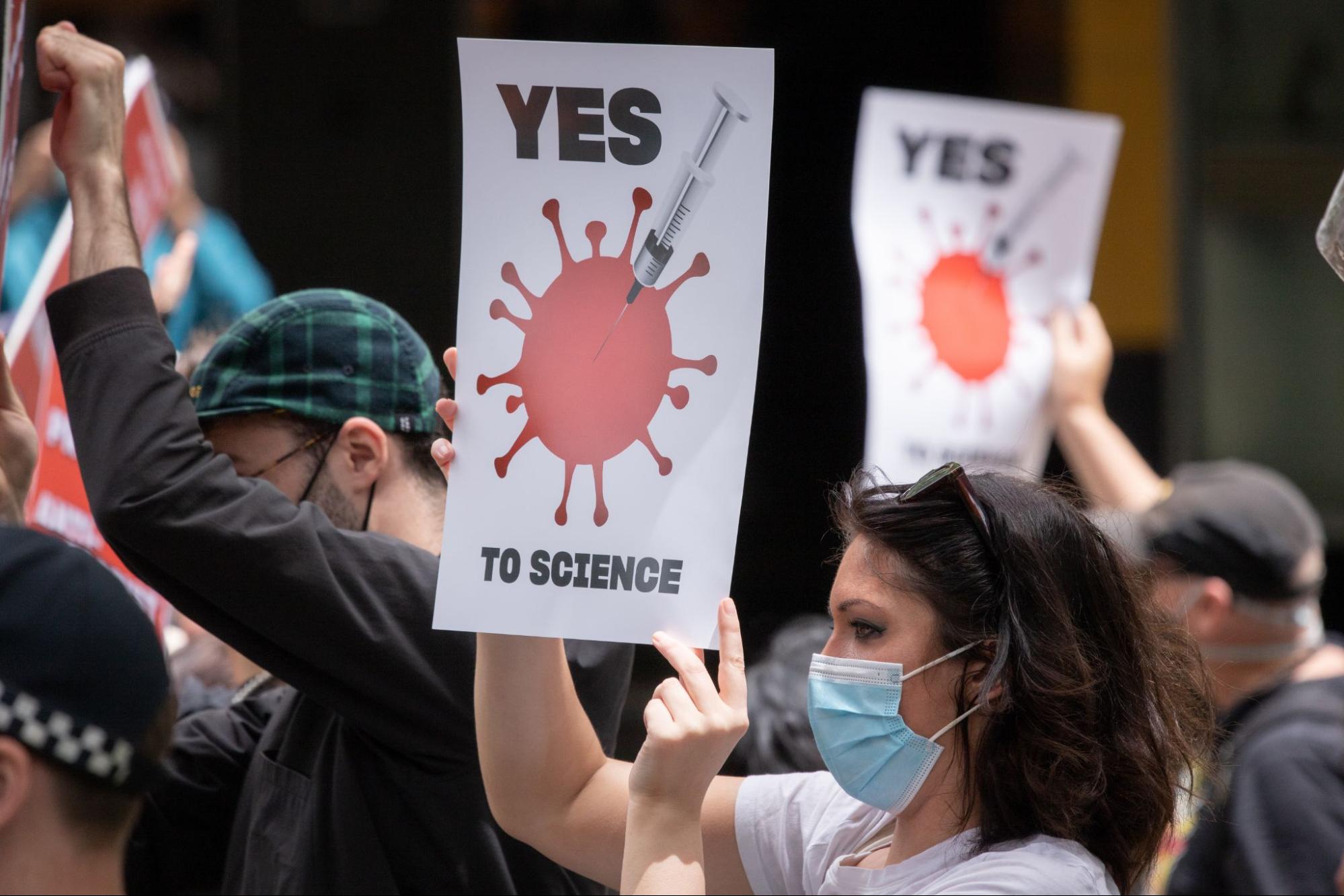10.2 Health as a Social Problem
Kathryn Burrows and Kimberly Puttman

Figure 10.3. Medical providers must use universal precautions such as masks and gloves when treating patients with communicable diseases such as Ebola and COVID-19.
Even with our brief explanation of COVID-19 statistics in the introduction of this chapter, we see that people experience unequal health outcomes based on their race and ethnicity. This is just one dimension of inequality in health outcomes. What else makes health and illness a social problem? Let’s apply the characteristics of a social problem to health and illness.
Health and illness in society go beyond individual experience. We usually think of health, illness, and medicine in individual terms. When a person becomes ill, we view the illness as a medical problem with biological causes. A physician treats the individual accordingly. A sociological approach takes a different view. Unlike physicians, sociologists and other public health scholars do not try to understand why any one person becomes ill. Instead, we typically examine illness rates to explain why people from certain social backgrounds are likelier than others to become sick. Our social location in society—our social class, race and ethnicity, gender, and other dimensions of diversity—makes a critical difference.
Medical sociology is the systematic study of how societies manage issues of health and illness, such as diseases and disorders, healthcare access, and the larger picture of physical, mental, and social components of health and illness. Major topics for medical sociologists include the doctor/patient relationship, the structure and socioeconomics of healthcare, and how culture impacts attitudes toward disease and wellness. In the next section, we’ll look at what medical sociologists find when they look at how experiences of health and illness can differ by social location.
How we get sick and how we stay healthy reveals both inequality and interdependence. For example, Flint, Michigan, residents experienced higher-than-normal levels of lead toxicity, hair loss, rash, and other health issues when the local municipal government changed the water supply in 2013. Although government officials knew that the Flint River was contaminated with pollution from manufacturing, they decided to use this water for city residents because it was cheaper. Decisions at several interdependent layers of government resulted in this harmful action. Local citizens connected with doctors, health officials, and journalists to tell the story of the contaminated water and support a change.
More than 60% of the residents of Flint are Black. Over 40% of Flint’s residents live below the poverty line. This combination of race and class influenced the original decision making and community response. Eventually, the Michigan Civil Rights Commission cited systemic racism as the fundamental cause for the questionable decisions. Recovery required both individual agency and collective action. If you’d like to learn more, Flint Water Crisis: Everything You Need to Know [website] provides more details.
Conflict between values may cause social problems to arise. We see this as people respond to government policies around COVID-19. How would you describe the difference in values between the social groups represented in figures 10.4 and 10.5?
Figure 10.4. Pandemic lockdown protesters hold signs that say that lockdown is an issue of tyranny and freedom.

Figure 10.5. Pandemic protesters hold signs that promote using science to end the pandemic. How is this perspective different from the protesters in image 10.4?
The protesters in Figure 10.4 explicitly state that the COVID-19 lockdown is an example of government tyranny. The protesters in Figure 10.5 promote vaccinations, asserting that scientific knowledge and research should be used to ensure our health. You may know people who support vaccines and social distancing as a way to manage the pandemic. You may know other people who think vaccines are dangerous and that state-mandated quarantining is “un-American.” This conflict in values creates the conditions in which a social problem is likely to arise.
Our ideas about what is healthy, what is illness, and what actions we should take to be healthy and treat illness are socially constructed. A sociological approach emphasizes that a society’s culture shapes its understanding of health and illness and practices of medicine. In particular, culture shapes a society’s perceptions of what it means to be healthy or ill, the reasons to which it attributes illness, and the ways in which it tries to keep its members healthy and cure those who are sick (Hahn & Inborn 2009). Knowing about a society’s culture helps us to understand how it perceives health and healing. By the same token, knowing about a society’s health and medicine helps us to understand important aspects of its culture. We’ll look more deeply into cultural constructions of health and illness in the upcoming section, Sociological Theories of Health.
As you think about your experience with COVID-19, have you changed how you think about your own health? Many people who became severely ill or died from COVID-19 had other health issues, such as hypertension and obesity. Do you know people whose attitudes about their general health have changed? Do you know people who are suspicious of the government’s intentions or less likely to listen to doctors or scientists? What do you think will be the best way to prevent illness and death should another pandemic strike? Each of these questions highlights a topic related to the social construction of the social problem of health and illness.
10.2.1 Licenses and Attributions for Health as a Social Problem
Open Content, Original
“Health as a Social Problem” by Kathryn Burrows and Kimberly Puttman is licensed under CC BY-NC-SA 4.0.
Open Content, Shared Previously
“Health as a Social Problem” is adapted from:
- “Introduction” and “The Social Construction of Health” by Tonja R. Conerly, Kathleen Holmes, Asha Lal Tamang, Introduction to Sociology 3e, Openstax, which is licensed under CC BY 4.0.
- “Understanding Health Medicine and Society” by University of Minnesota Libraries Publishing, Sociology: Understanding and Changing the Social World, which is licensed under CC BY-NC-SA 4.0.
Modifications, licensed under CC BY-NC-SA 4.0, include remixing with original content.
Figure 10.3. “US Navy Doctors, Nurses and Corpsmen Treat Patients in the ICU Aboard USNS Comfort” by Navy Medicine is in the Public Domain.
Figure 10.4. “Photo of an anti-lockdown protest” by Michael Swan is in the Public Domain.
Figure 10.5 “Photo of Yes to Science protesters” by Mitchell Luo is licensed under the Unsplash License.

